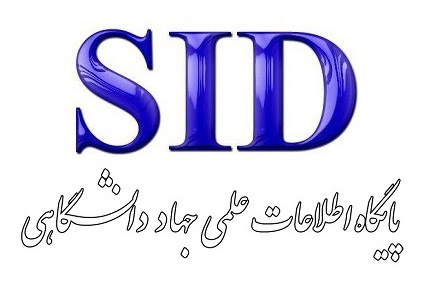Modeling of Pregnancy Motivation based on Family Communication Patterns with the Mediation of Pregnancy Anxiety
Keywords:
Pregnancy Motivation, Family communication patterns, Pregnancy anxietyAbstract
Objective: Motivation and tendency to become pregnant are considered to be important variables in the birth rate of children in any society, including Iranian society. Therefore, the aim of this study was modeling the pregnancy motivation based on family communication patterns with mediation of pregnancy anxiety.
Methodology: The present study was a descriptive research from type of correlation. The population of this study was women aged 20 to 45 years who had no children in District 6 of Tehran in 2024. The final sample of this study after removing missing questionnaires was 464 people who were selected by available sampling method. The research tools included the pregnancy motivation questionnaire (Miller, 1995), revised communication patterns questionnaire (Crenshaw et al., 2016), and pregnancy anxiety questionnaire (Van den Bergh, 1990). The data of this research were analyzed by structural equation modeling method in SPSS23 and LISREL8.8 software.
Findings: The results of the present research showed that the model of pregnancy motivation based on family communication patterns with mediation of pregnancy anxiety had a good fit. In this model, family communication patterns had a direct and positive effect on pregnancy anxiety, and a direct and negative effect on pregnancy motivation, and pregnancy anxiety had a direct and negative effect on pregnancy motivation (P<0.05). Also, family communication patterns with mediation of pregnancy anxiety had no indirect and significant effect on pregnancy motivation (P>0.05).
Conclusion: According to the results of this research, it can be said that improving family communication patterns and reducing pregnancy anxiety played an effective role in increasing pregnancy motivation.
Downloads
References
Antunes, M., Galhanas, A., Vitorino, A. L., Palma, S., & Frias, A. (2025). Motivations regarding continuing or terminating pregnancy in women with high-risk pregnancies: a scoping review. Frontiers in Global Women's Health, 6, 1517669.
https://doi.org/10.3389/fgwh.2025.1517669
Beumer, W. Y., Reilingh, A. Y. A. M., Dalmijn, E., Roseboom, T. J., & Van Ditzhuijzen, J. (2025). Motivations for abortion or continuation of an unwanted pregnancy: A scoping review of the global literature. Perspectives on Sexual and Reproductive Health. 57(1), 45-62. https://doi.org/10.1111/psrh.12293
Crenshaw, A. O., Christensen, A., Baucom, D. H., Epstein, N. B., & Baucom, B. R .W. (2016). Revised scoring and improved reliability for the communication patterns questionnaire. Psychological Assessment, 29(7), 913-925. https://doi.org/10.1037/pas0000385
Dehghani Ashkezari, E., Farzin Rad, B., & Kahdouei, S. (2020). Predicting psychological vulnerability based on couples’ communication patterns. Middle Eastern Journal of Disability Studies, 10(198), 1-8. https://dor.isc.ac/dor/20.1001.1.23222840.1399.10.0.152.1
Dominguez-Solis, E., Lima-Serrano, M., & Lima-Rodriguez, J. S. (2021). Non-pharmacological interventions to reduce anxiety in pregnancy, labour and postpartum: A systematic review. Midwifery, 102, 103126. https://doi.org/10.1016/j.midw.2021.103126
Durcan, E., Turan, S., Bircan, B. E., Yaylamaz, S., Okur, I., Demir, A. N., & et al. (2022). Fertility desire and motivation among individuals with gender dysphoria: A comparative study. Journal of Sex & Marital Therapy, 48(8), 789-803. https://doi.org/10.1080/0092623x.2022.2053617
Ekaningtyas, N. L. D. (2022). Penyuluhan manfaat penerapan psikologi komunikasi dalam keluarga di dusun jenggala, kecamatan pringgarata, lombok tengah. Dharma Sevanam: Jurnal Pengabdian Masyarakat, 1(1), 1-12. https://doi.org/10.53977/sjpkm.v1i01.529
Fraga, S. D., Khan, I. N., Sharma, T. A., & Lawrence, E. R. (2024). Predominant approaches to measuring pregnancy-related anxiety in Sub-saharan Africa: a scoping review. BMC Public Health, 24(2425), 1-11. https://doi.org/10.1186/s12889-024-19935-3
Gobel, A., Arck, P., Hecher, K., Schulte-Markwort, M., Diemert, A., & Mudra, S. (2020). Manifestation and associated factors of pregnancy-related worries in expectant fathers. Frontiers in Psychiatry, 11(575845), 1-15. https://doi.org/10.3389/fpsyt.2020.575845
Hadfield, K., Akyirem, S., Sartori, L., Abdul-Latif, A. M., Akaateba, D., Bayrampour, H., & et al. (2022). Measurement of pregnancy-related anxiety worldwide: a systematic review. BMC Pregnancy and Childbirth, 22(1), 331. https://doi.org/10.1186/s12884-022-04661-8
Jin, J., Bao, Y., Han, Y., Zhang, H., Zheng, Q., Zhao, X., & et al. (2025). A study on the factors influencing pregnancy-related anxiety and its correlation with family functioning and social support among primiparous pregnant women in early pregnancy. Journal of Obstetrics and Gynaecology Research, 51(7), e16333. https://doi.org/10.1111/jog.16333
Karakose, S., & Ledermann, T. (2023). Let’s talk, honey: An analysis of associations between communication patterns and dyadic adjustment in married couples. Journal of Social and Personal Relationships, 40(8), 2592-2613. http://dx.doi.org/10.1177/02654075231153668
Khezri Yazdi,, L., & Demehri, F. (2024). Predicting concerns during pregnancy based on marital quality and cognitive self-regulation with the mediating role of mental security. The Journal of Toloo-e-Behdasht, 22(6), 30-43. http://dx.doi.org/10.18502/tbj.v22i6.15209
Meghana, T. S. S., & Simon, S. (2024). The relationship between communication patterns, differentiation of self and attachment styles among married individuals. The International Journal of Indian Psychology, 12(2), 3215-3232. https://doi.org/10.25215/1202.284
Miller, W. B. (1995). Childbearing motivation and its measurement. Journal of Biosocial Science, 27(4), 473-487. https://doi.org/10.1017/s0021932000023087
Mohannaee, S., Poladei Rayshahri, A., Golestaneh, S., & Keykhosrovani, M. (2019). Effectiveness of couple therapy by Hendrix imago therapy method on improving communication patterns and reducing emotional divorce. Iranian Journal of Psychiatric Nursing, 7(1), 58-65. https://doi.org/10.21859/ijpn-07018
Mustofa, M. B., & Wuryan, S. (2025). Interpersonal communication and family resilience regarding an adult relative’s mental health problem in Islamic law perspective. RADEN INTAN:
Proceedings on Family and Humanity, 2(1), 146-158. http://dx.doi.org/10.47352/3032-503x.65
Nouri, N., & Naghsh Tabrizi, M. (2024). Predicting pregnancy anxiety on the basis of fertility motivations, early maladaptive schemas, marital satisfaction, and quality of life. Women’s Studies Sociological and Psychological, 22(2), 178-218. https://doi.org/10.22051/jwsps.2024.42087.2691
Pashaei, Z., Mesgarzadeh, M., Rabiepur, S., & Gharaaghaji, R. (2024). The relationship between childbearing motivations and fertility preferences of couples referring to comprehensive health centers in Urmia City in 2022. Nursing and Midwifery Journal, 22(6), 463-475. http://dx.doi.org/10.61186/unmf.22.6.463
Pickover, A. M., Dodson, T. S., Tran, H. N., Lipinski, A. J., & Beck, J. G. (2021). Factor structure of the communication patterns questionnaire in violence-exposed women. Journal of Interpersonal Violence, 36(19-20), 9352-9370. https://doi.org/10.1177/0886260519867147
Rajati, R., Khadivzade, T., Esmaeili, H., & Danesh, F. (2022). Relationship between the quality of the couple’s relationship with the desires of fertility of working women and their spouses. Nursing and Midwifery Journal, 20(2), 155-162. http://dx.doi.org/10.52547/unmf.20.2.155
Sadeghi Avval Shahr, H., Nejatifar, N., Amini, L., Sadat, Z., & Haghani, S. (2024). Relationship between marital quality and attitudes towards childbearing and fertility in married women referred to comprehensive health centers in Kashan, Iran. Iran Journal of Nursing, 37(148), 178-195. http://dx.doi.org/10.32598/ijn.37.148.3326.1
Schetter, C. D., Rahal, D., Ponting, C., Julian, M., Ramos, I., Hobel, C. J., & Coussons-Read, M. (2022). Anxiety in pregnancy and length of gestation: Findings from the healthy babies before birth study. Health Psychology, 41(12), 894-903. https://doi.org/10.1037/hea0001210
Shahmirzad, N., Miller, W. B., Farid, M., & Akbari Kamrani, M. (2025). Communication skills, understanding intellectual coordination and marital satisfaction on childbearing motivation in reproductive-age Iranian couples. Scientific Reports, 15(1), 6278. https://doi.org/10.1038/s41598-025-90358-9
Van den Bergh, B. R. (1990). The influence of maternal emotions during pregnancy on fetal and neonatal behavior. Journal of Prenatal & Perinatal Psychology and Health, 5(2), 119-130. https://psycnet.apa.org/record/1991-18227-001
Velotti, P., Busonera, A., Tambelli, R., & Zavattini, G. C. (2022). Communication patterns questionnaire: Expanding reliability and validity evidence. Journal of Couple & Relationship Therapy, 21(4), 324-343. https://doi.org/10.1080/15332691.2021.1967825
Ventanilla, V., & Villaruel, J. P. H. (2022). Family communication patterns and teenage pregnancies among Filipino youth. Asean Social Work Journal, 10(1), 35-46. http://dx.doi.org/10.58671/aswj.v10i1.10
Yesilcinar, I., Acavut, G., & Guvenc, G. (2023). Anxiety during the pregnancy and affecting factors: a cross-sectional study. Archives of Gynecology and Obstetrics, 307(1), 301-309. https://doi.org/10.1007/s00404-022-06590-5
Downloads
Published
Submitted
Revised
Accepted
Issue
Section
License
Copyright (c) 2025 فیروزه مهدیانی, فریده دوکانه ای فرد , اعظم فتاحی اندبیل (Author)

This work is licensed under a Creative Commons Attribution-NonCommercial 4.0 International License.









